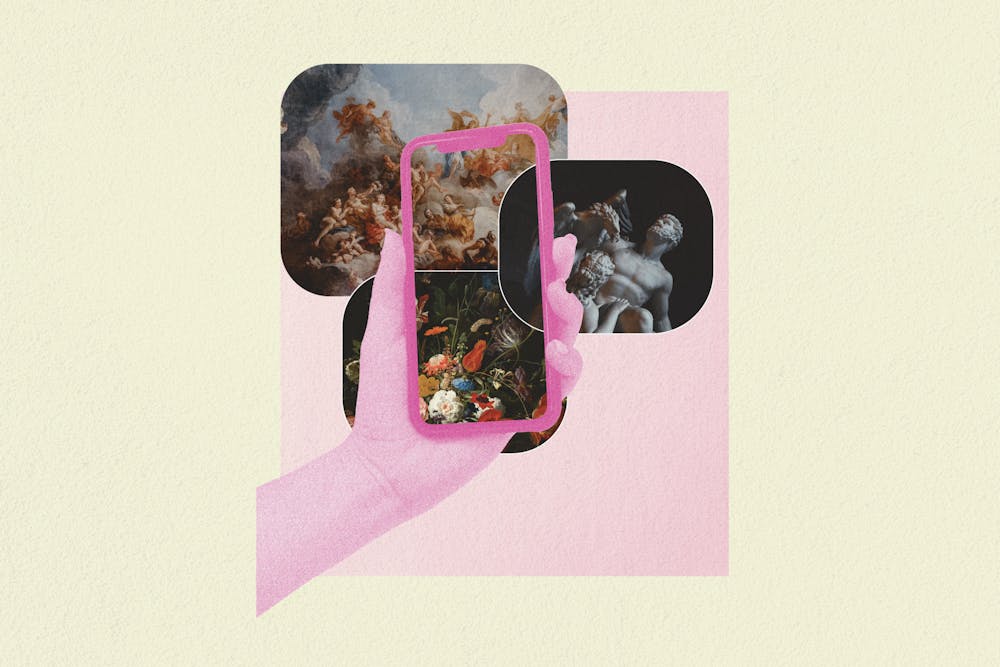Twitter, the glorious hellscape of shitposts, gifs, and fights picked by internet strangers, now has a new niche for art history nerds: one with an undead twist. Rising from their graves to join the ranks of top Tweeters around the globe, fine art icons like Van Gogh, Sandro Botticelli, and hundreds more have filled the platform with their impressive works. Created by Andrei Taraschuk, “art bots" are giving Twitter users the chance to follow artists and enjoy their works during daily scrolls. These "art bots" bring art out of the museum and give it a place on social media, spotlighting painters who may have lived centuries before Twitter existed.
Taraschuk describes himself as "a software engineer by day and an art–bot developer by night." With a background in both art and computer science, this Russian expat was looking for a way to fuse his interests when he came up with the idea to give social media users the chance to see art on their feeds. “I thought it would be interesting if I could follow dead artists on Twitter and see their art in my timeline,” Taraschuk says. So, in collaboration with a fellow software developer, Taraschuk began formulating the “art bots.”
Each bot is an autonomous social media account, programmed using an algorithm that lets it perform without human intervention. Bots on Twitter are often used to give users breaking news, weather forecasts, and score updates. “Art bots” capitalize on this technology to share works and to give life to some of art history’s greats. One of their most intriguing features is the fact that the imagined users retweet works of art by their contemporaries. For example, the Hokusai fan account could retweet a post by Utamaro, or the Norman Rockwell account might retweet Grant Wood. Historical accuracy is a priority of the bots, as they aim to recreate what an artist might really have seen on Twitter if it existed during their time.
There are currently 565 art bots on Twitter, all of which were created by Taraschuk and can be found on his profile. Many promote well–known artists, like Keith Haring, while some accounts are for far less popular creators, like German naturalist and illustrator Maria Sibylla Merian. Along with bots for specific artist profiles, there are also some dedicated to sharing specific styles or collections, like from the Minneapolis Institute of Art’s Photography and New Media department. Not all of the profiles are for dead artists, either—some accounts were created for contemporary artists without a Twitter presence. While there is already an extensive catalogue to explore, Tarschuk hopes to expand this project to include even more, particularly focusing on contemporary artists and photographers.
In July of this year alone, 237,125 artworks were shared, racking up a total of 3.1 million likes. Taraschuk says he attributes part of the project’s success to the coronavirus pandemic, which disrupted the public’s ability to visit museums or galleries. As we were forced to shift to the internet as our main source of staying connected during lockdown, many individuals found themselves scrolling aimlessly and seeking entertainment online. The “art bots” replaced pensive walks around galleries with clicks and shares, giving the public a chance to stay exposed to art even when the institutions that housed it were closed.
The impressive growth and reach of the “art bots” has had a monumental impact on the way we consume culture in today’s day and age. They take art off the walls of museums and out of the archive, bringing pieces to the social media masses. The bots allow us to cherish our favorite works and to discover some that are unknown, perhaps finding a new favorite along the way. “Art is a highly visual medium and it fits perfectly within the context of a social media feed,” Taraschuk says. “It is beautiful, it does not get old no matter how much you look at it, and it does not require additional context.” So, because Michelangelo isn’t here to beg you for likes, retweets, and comments, we'll do it for him. Give the man a follow!

